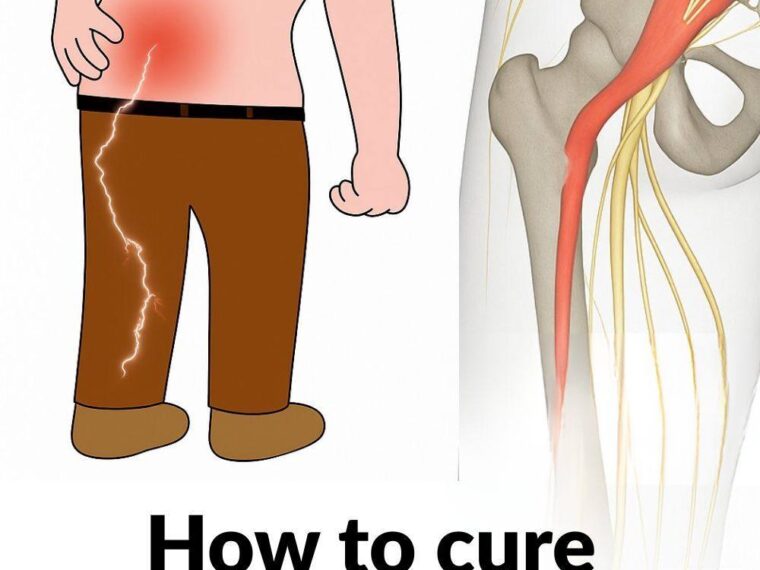🧎♀️ 1. Reclining Pigeon Pose (Piriformis Stretch)
How to do it:
- Lie on your back with knees bent.
- Cross the affected leg’s ankle over the opposite thigh.
- Pull the uncrossed leg gently toward your chest.
- Hold for 30 seconds and release.
Why it works:
This stretch opens up the piriformis muscle, which can compress the sciatic nerve if too tight.
🚶♂️ 2. Knee-to-Opposite-Shoulder Stretch
How to do it:
- Lie on your back with your legs extended.
- Bend your right leg and clasp your hands around the knee.
- Gently pull the knee across your body toward your left shoulder.
- Hold for 30 seconds, repeat 2–3 times.
Why it works:
This relieves pressure in the lower spine and stretches the gluteal and spinal muscles.
🧎♂️ 3. Cat-Cow Stretch
How to do it:
- Get on hands and knees.
- Inhale and arch your back (Cow pose), looking up.
- Exhale and round your spine toward the ceiling (Cat pose).
- Repeat 10–15 times slowly.
Why it works:
Promotes flexibility in the spine and reduces nerve compression caused by stiff vertebrae or discs.
🔍 Clinical trials in the journal Spine (2021) confirm that core-stability and mobility exercises significantly reduce sciatic pain and improve function over 6–12 weeks of consistent practice.
🚫 What to Avoid with Sciatica
- Sitting for long periods
- Heavy lifting or twisting movements
- Sleeping on a soft mattress without support
- Sudden high-impact sports
🛌 When to See a Doctor
You should consult a healthcare professional if:
- Pain lasts longer than 6 weeks
- You have numbness or weakness in the legs
- You experience loss of bladder or bowel control (medical emergency)
✅ Final Thoughts
While sciatic nerve pain can be intense, it’s often treatable with stretching, lifestyle changes, and natural remedies. Incorporating the 3 exercises above into your daily routine can dramatically reduce pain and promote healing. In combination with anti-inflammatory foods and rest, you can begin to regain mobility and improve quality of life—without relying solely on medication.




